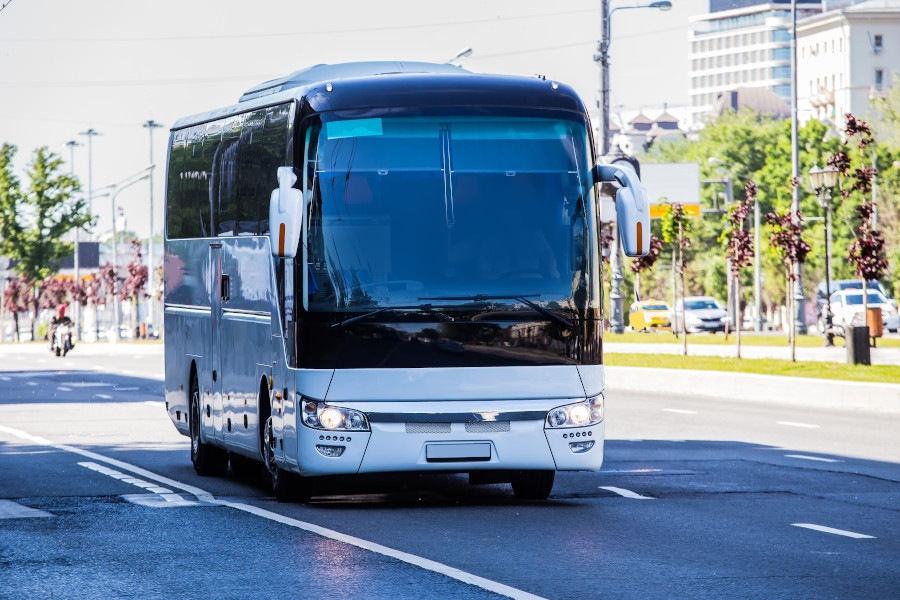Four ways in which the tour bus industry can alleviate climate change

Tour buses offer a convenient and relaxing way for people to take in the sights when visiting a new city while on vacation. However, buses that run on diesel fuel, as most still do, are significant sources of greenhouse gas emissions—a leading cause of climate change.
According to a recent Congressional Budget Office (CBO) report, emissions of CO2 from intercity buses, including charter buses, motorcoaches, and tour buses, averaged 0.15 pounds per passenger-mile in 2019. The confluence of factors such as idling the engine while the motorcoach remains stationary, cruising adjacent neighborhoods after unloading passengers until the next scheduled pick-up, and the lack of available parking in urban areas that otherwise would minimize the need for idling and cruising, result in elevated levels of greenhouse gas emissions from tour buses. This article looks at these factors and the ways in which the tour bus industry can reduce its carbon footprint.
Idling and cruising contribute to greenhouse gas emissions
A recent study conducted by faculty from George Mason University’s School of Sport, Recreation, and Tourism Management (SRTM) examined the relationship between bus idling and cruising times and greenhouse gas emissions. The study involved the collection of data specific to eight bus tours at the National Mall in Washington, DC. Tour participants included school-age children, veterans, adults, and visitors from abroad. The Mason study recorded different variables including the number of passengers on each bus, temperature conditions at the time of the tour, duration of the tour, the number of stops made, vehicle miles traveled, cruising mileage, idling mileage, and other parameters.
The results showed that idling times for the eight tours ranged anywhere from 15 to 180 minutes and were influenced by the seasonal temperature outside the bus and the bus operator’s desire to maintain an onboard temperature so that passengers were comfortable. For example, the highest idling time of 180 minutes, or three hours, occurred with a group of veterans who visited Washington, DC on a sweltering day when temperatures soared to the low 90’s (Fahrenheit). Idling time was converted to mileage based on the 25-mph speed limit in effect. According to Mason researchers, idling mileage equivalencies combined with cruising miles were estimated up to 37,248 miles daily during peak season for the population of tour buses, translating to 3,384 gallons of daily extraneous diesel consumption generating up to 12,574,980 kg of greenhouse gas emissions annually. Based on the study results, Mason researchers concluded that a reduction in idling and cruising would mitigate greenhouse gas emissions and improve the wellbeing of urban residents who live in neighborhoods near heavily trafficked areas.
Itineraries could be restructured to include alternate forms of travel that would supplement bus transportation
Amongst the recommendations offered to reduce greenhouse gas emissions, the study authors proposed that tour itineraries could be restructured to include alternative forms of on-site transportation such as walking, cycling, or using scooters in lieu of relying on buses for point-to-point transfer of passengers. The authors explained that this would decrease traffic congestion and driving time for tour bus operators and reduce the potential for traffic accidents thereby increasing the safety of motorcoach riders.
Implementation of transportation planning assessment changes could lead to a reduced carbon footprint
A reduction in greenhouse gas emissions and a smaller carbon footprint from tour buses could be achieved through implementation of changes to urban transport development policies. Mason researchers suggest that these changes could be aligned with benchmarks set forth in the Index of Sustainable Urban Mobility—a tool that can help localities plan and improve upon the effectiveness of sustainable urban transport systems by taking into consideration variables such as accessibility, infrastructure, non-motorized transport, integrated planning, circulation, and systems related to fares, regulation, and enforcement.
The availability of more parking could lead to lower emission levels
Increasing the availability of parking is another way of mitigating greenhouse gas emissions from tour buses. Mason researchers explain that instead of parking once passengers have unloaded, tour bus operators will cruise nearby areas that include residential neighborhoods until it is time to return to pick up their riders. Not only does this lead to the unnecessary consumption of more fuel but it exacerbates already existing traffic congestion.
Conversion of tour buses to electric power would reduce greenhouse gas emissions
Finally, the eventual conversion of diesel fuel powered tour buses to an all-electric fleet would result in a significant reduction in emissions. The New York City and Los Angeles public transit authorities have already pledged their commitment to the electrification of their bus fleets over the coming years. Other municipal authorities are being encouraged to follow suit with the goal of achieving net zero emissions.
To learn more about the impact of tour buses on greenhouse gas emissions, read this article by the School of Sport, Recreation, and Tourism Management (SRTM) faculty. Mason’s Tourism and Events Management Program prepares students for careers in the tourism, events, and hospitality industries. Please visit our website to learn more.
